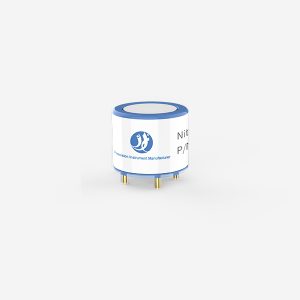Introduction Air quality is a critical aspect of public health and environmental protection. Poor air quality can have adverse effects on human health, leading to respiratory problems, cardiovascular diseases, and even premature death. In addition, air pollution can also have detrimental effects on the environment, including damage to ecosystems and wildlife. As such, monitoring and improving air quality is of utmost importance.

In recent years, there has been a growing emphasis on the development and implementation of cutting-edge gas sensors for the monitoring of air quality. These sensors have the potential to provide real-time data on air pollution levels, allowing for more effective and targeted interventions to improve air quality. This article will explore the current state of gas sensor technology, its applications in air quality monitoring, and the potential benefits it offers.
Gas Sensor Technology Gas sensors are devices that are designed to detect and measure the concentration of specific gases in the air. They work by converting the chemical reactions between the target gas and the sensor material into an electrical signal, which can then be quantified and analyzed. There are various types of gas sensors, including electrochemical, metal oxide semiconductor, and optical sensors, each with its own strengths and limitations.
In recent years, significant advancements have been made in gas sensor technology, leading to the development of highly sensitive and selective sensors. These sensors are capable of detecting a wide range of gases at very low concentrations, making them ideal for air quality monitoring applications. Furthermore, the miniaturization of sensor components has enabled the development of portable and affordable sensor devices, allowing for widespread deployment in various environments.
Applications in Air Quality Monitoring Gas sensors have a wide range of applications in air quality monitoring, including indoor and outdoor air quality assessment, industrial emissions monitoring, and vehicle emissions testing. These sensors can detect a variety of air pollutants, such as carbon monoxide, nitrogen dioxide, sulfur dioxide, ozone, and particulate matter, providing valuable data on air pollution levels.
One of the key advantages of gas sensors is their ability to provide real-time data on air quality. This enables more timely and targeted interventions to address air pollution hotspots and mitigate the health impacts of poor air quality. For example, sensor networks can be deployed in urban areas to monitor air pollution levels and provide alerts to residents and authorities when pollution levels exceed safe limits. This can help to inform public health interventions, such as advisories to avoid outdoor activities during high pollution events.
Gas sensors also have the potential to revolutionize the way air quality is monitored and managed. Traditional air quality monitoring stations are often expensive to install and maintain, limiting their deployment to a few locations. In contrast, gas sensors can be deployed in large numbers at a fraction of the cost, providing a more comprehensive and granular view of air pollution levels. This can help to identify pollution sources and trends, and inform targeted interventions to improve air quality.
Potential Benefits The widespread deployment of cutting-edge gas sensors for air quality monitoring offers several potential benefits. Firstly, it can help to improve public health by providing timely and accurate data on air pollution levels. This can inform individuals and communities about the risks of exposure to air pollution, and empower them to take measures to protect their health, such as avoiding outdoor activities during high pollution events.
Secondly, gas sensors can help to inform policy and regulatory interventions to improve air quality. By providing real-time data on air pollution levels, sensor networks can help to identify pollution hotspots and sources, and inform targeted interventions to reduce emissions and improve air quality. This can lead to more effective and efficient air quality management, and ultimately, better protection of public health and the environment.
Finally, the widespread deployment of gas sensors for air quality monitoring can help to raise awareness about the importance of air quality and the impacts of air pollution on health and the environment. This can lead to increased public support for measures to improve air quality, such as stricter emissions standards for vehicles and industrial facilities, and greater investment in clean energy and transportation infrastructure

Challenges and Considerations While gas sensors hold great promise for air quality monitoring, there are several challenges and considerations that need to be addressed. Firstly, the accuracy and reliability of gas sensors need to be carefully validated and calibrated to ensure that the data they provide is accurate and action
 : +86 155 8830 2704
: +86 155 8830 2704 : jxdziot@gmail.com
: jxdziot@gmail.com
